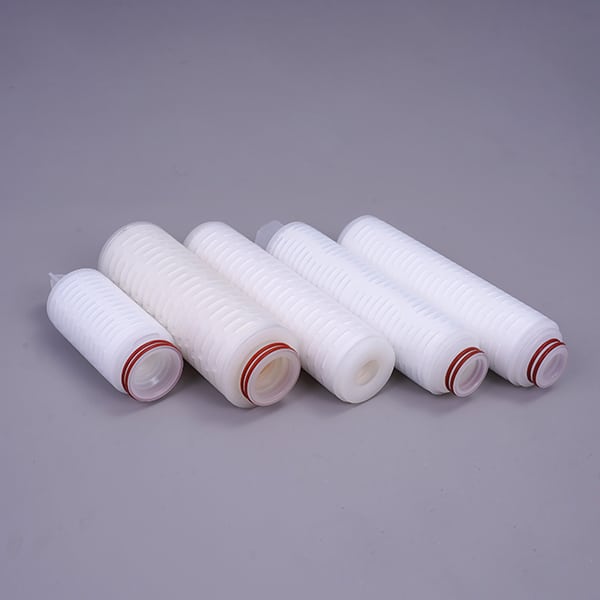
Title: How to Use a Liquid Filter Cartridge for Effective Filtration
Liquid filter cartridges play an essential role in industrial, commercial, and residential filtration systems by removing particles and contaminants from water, chemicals, and other fluids. Knowing how to correctly use and maintain these cartridges can extend their lifespan, improve performance, and ensure that filtration systems operate efficiently. This guide will outline the steps to properly use a liquid filter cartridge, including installation, maintenance, and replacement tips.
Understanding the Liquid Filter Cartridge
A liquid filter cartridge is designed to trap contaminants from fluid as it flows through the filtration system. It can be used for various applications, including water treatment, industrial processing, pharmaceuticals, and food and beverage industries. The choice of filter cartridge depends on the type and size of contaminants, fluid type, and system requirements. Cartridges come in different materials, such as polypropylene, PTFE, and stainless steel, to accommodate diverse needs. Some types include pleated filters, depth filters, and string-wound filters, each suited for specific applications and particle sizes.
Step-by-Step Guide on How to Use a Liquid Filter Cartridge
- Select the Right Cartridge
Choose a filter cartridge that matches the intended filtration application and the size of the contaminants. The cartridge’s micron rating—indicating the smallest particle size it can filter—is a critical factor in its effectiveness. For instance, pleated filters provide surface filtration, catching larger particles on the surface, while depth filters capture smaller particles throughout the filter media, making them ideal for removing sediment from liquids like water or oil. - Prepare the Filtration System
Before installing the cartridge, turn off the filtration system and depressurize it. This process ensures safety and prevents leaks during installation. Open the air vent and drain valves to release any trapped air and remaining fluid, which makes the process cleaner and safer. - Install the Cartridge
Follow these steps to install a new cartridge:- Open the filter housing and remove the old cartridge if present.
- Inspect and clean the housing to remove any residual contaminants or debris that could compromise the new cartridge’s performance.
- Insert the new cartridge, ensuring it is correctly aligned with the housing. Some cartridges may come with end caps or alignment plates for easier installation. Secure all components, including springs or caps, to prevent movement during operation.
- Once the cartridge is in place, check that all seals and O-rings are clean and in good condition. Lubricate O-rings if necessary to ensure a tight seal when the housing is reassembled.
- Start the Filtration Process
After installation, close the housing lid and reattach any screws or fasteners. Close the drain valve, and slowly open the inlet valve to allow liquid to flow through the system, avoiding abrupt pressure changes. It’s important to purge any air trapped inside by running liquid through the system until it flows smoothly. Then, close the air vent valve to maintain pressure within the system.
Maintenance Tips for Prolonged Cartridge Life
Regular maintenance of your filter cartridges is essential for optimal performance and longevity. Here are some key practices:
- Monitor Pressure Differential: Most systems have a pressure gauge to measure the pressure drop across the cartridge. A higher differential pressure (around 10 psi) often indicates clogging, suggesting that the cartridge may need replacement.
- Clean Reusable Filters: For some types, such as pleated or stainless steel cartridges, periodic cleaning can help restore their filtration capacity. Follow manufacturer guidelines to avoid damage—some can be backwashed or soaked in a cleaning solution to remove trapped particles.
- Replace Cartridges Periodically: Even with maintenance, all cartridges have a finite lifespan. Depending on the application, they may require replacement every few weeks to months. Following the manufacturer’s recommended replacement intervals will prevent filter failure and maintain water quality.
Troubleshooting Common Issues
Proper cartridge use and maintenance prevent most filtration issues, but problems can occasionally arise. Here are some common issues and how to resolve them:
- Leaks: Check O-rings and seals for signs of wear or improper seating if you notice leaks around the housing. Lubricating O-rings and tightening the housing can help resolve this.
- Reduced Flow Rate: A significant reduction in flow rate can signal that the filter is clogged. Inspect the pressure differential and replace the cartridge if needed.
- Air Trapped in System: If air remains in the system, it can lead to inefficiency. Purge trapped air by briefly running the liquid through the system with the vent valve open, then close it to resume regular operation.
Why Use Liquid Filter Cartridges?
Liquid filter cartridges are highly effective for applications where purity and cleanliness are crucial, including drinking water systems, food production, and pharmaceutical processing. By ensuring consistent filtration, they help protect equipment, improve product quality, and meet health and safety standards. Different filter materials offer advantages like resistance to high temperatures, compatibility with various chemicals, and robust contaminant removal, making them adaptable to nearly any fluid filtration need.
In summary, using a liquid filter cartridge correctly enhances filtration performance, extends cartridge life, and ensures a safe and efficient filtration system. By selecting the right cartridge type, installing it properly, maintaining it regularly, and troubleshooting any issues, you can maximize your system’s efficiency and achieve optimal fluid purity.
Conclusion
Whether for industrial or residential applications, liquid filter cartridges are indispensable for effective liquid filtration. Selecting the correct cartridge, following installation and maintenance procedures, and monitoring performance will ensure reliable filtration and long-term system integrity. By understanding the specific needs of your filtration process and keeping up with routine maintenance, you can make the most of your liquid filter cartridges, benefiting from clean and safe fluids every time.

